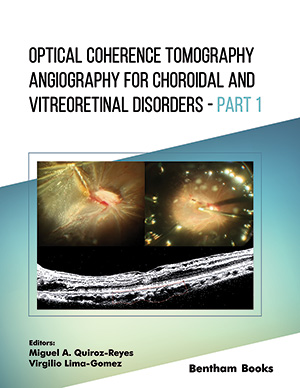Abstract
Optical coherence tomography (OCT) is a practical and common imaging
method for the study of diseases of the retina, choroid, and vitreoretinal interface.
Software and technological advances have allowed us to observe changes in the retinal
at resolutions less than 5 µm; the development of angiography with OCT (OCTA)
allows us to three-dimensionally evaluate the existing perfusion in the analyzed retina
and choroid non-invasively and without a specific dye, such as fluorescein or
indocyanine green angiography. We can detect important clinical differences between
OCT and OCTA, although these approaches are complementary. Diabetic retinopathy,
vascular occlusions, and choroidal neo-vascularization secondary to age-related
macular degeneration and other causes are among the conditions whose diagnosis,
treatment, and follow-up benefit from applying these techniques. Leak quantification in
cases of macular edema is a good candidate for future objective evaluation; currently,
its existence is only demonstrable in structural OCT, although it can be indirectly
inferred in OCTA by observing vascular displacements and deformity of the capillary
walls. Using OCTA, it is possible to detect intravascular flow even in fibrous tissue,
thereby allowing the evaluation of neo-vascular activity in vasoproliferative diseases.
Keywords: OCT, OCTA, Segmentation, Macular telangiectasia, Diabetic retinopathy, Macular degeneration, Vascular occlusion, Arterial occlusion, Venous occlusion, Choroidal neo-vascularization, Macular ischemia, Macular edema, Myopic neo-vascularization.






















